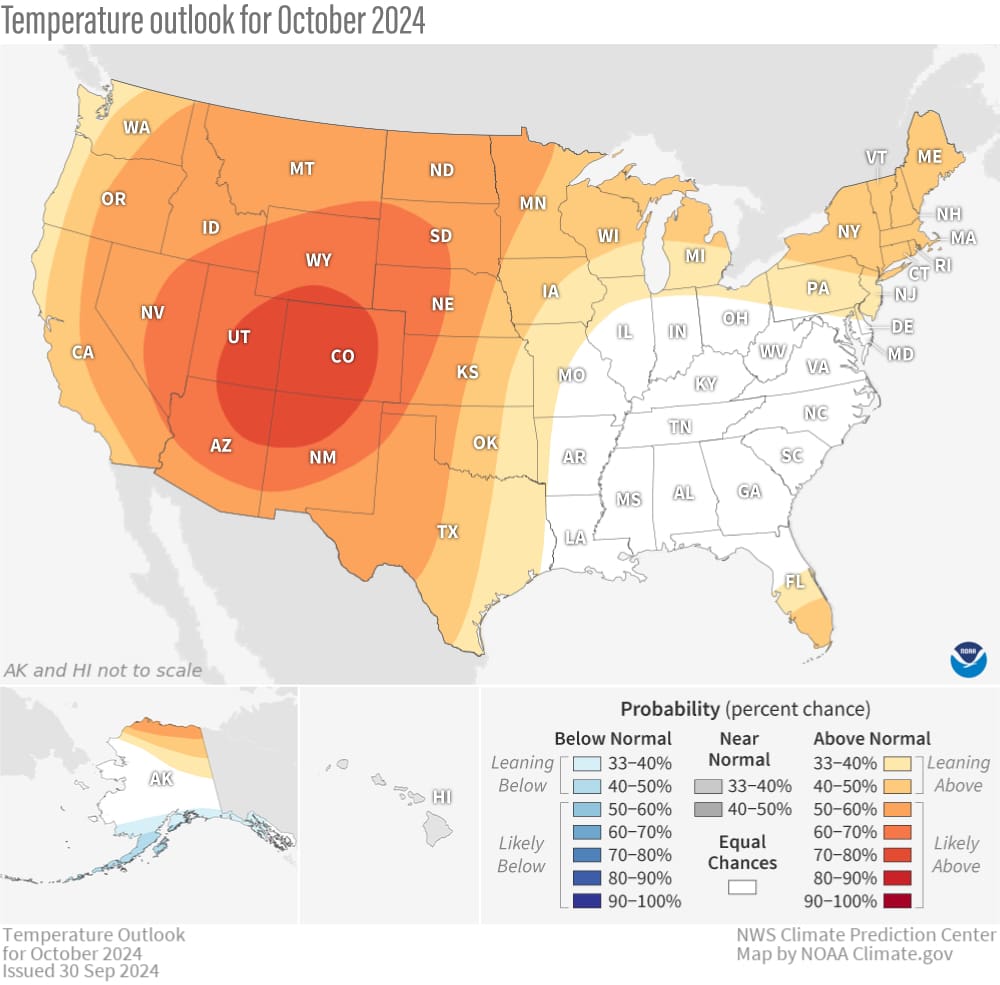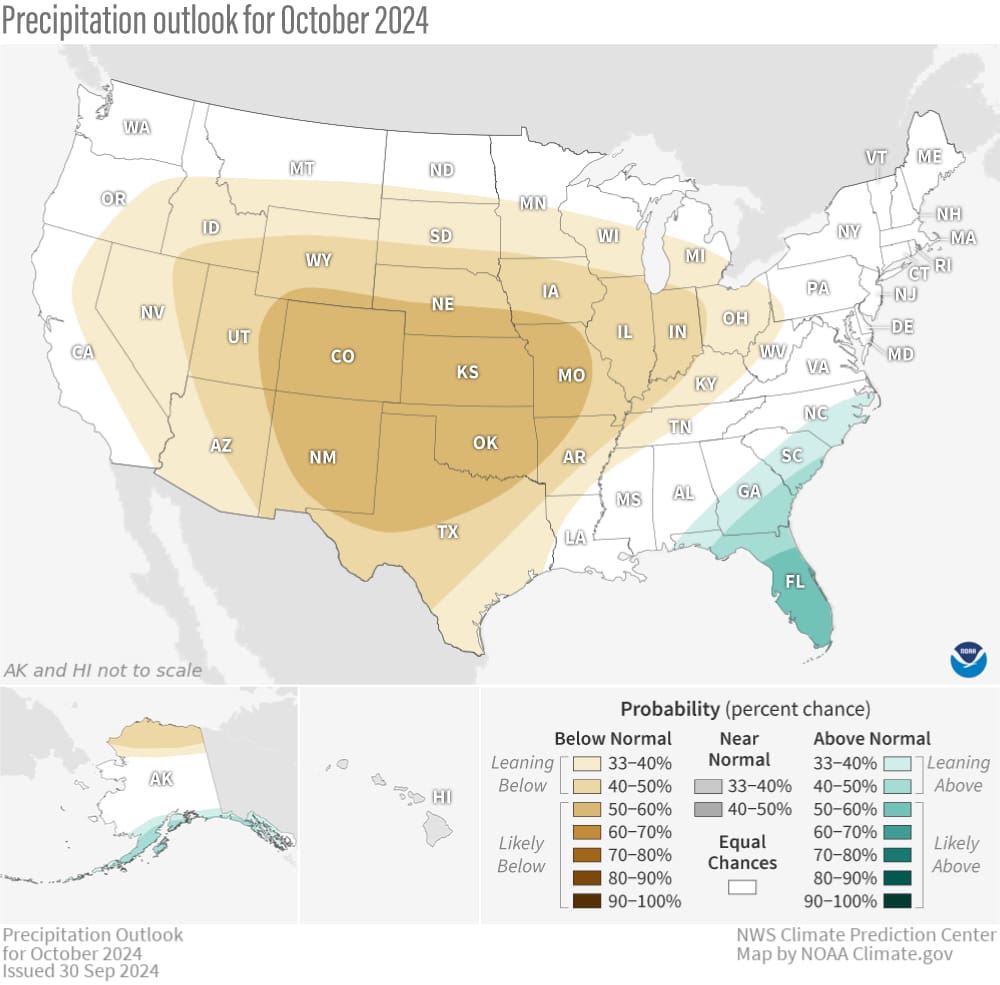Weather
Utah braces for warm, dry October as drought persists

October colors peek with warm temps and dry weather. Photo: TownLift
SALT LAKE CITY — The Western United States, including Utah, is expected to face another month of above-average temperatures and below-normal precipitation, according to the latest outlook from the National Oceanic and Atmospheric Administration’s Climate Prediction Center.

The October 2024 forecast, released on September 30, indicates a high probability of warmer-than-average conditions across the region. The Four Corners area, which includes Utah, has the highest likelihood of elevated temperatures, with chances exceeding 70%.
Precipitation levels are anticipated to remain below average throughout much of the West, continuing a trend that has contributed to ongoing drought conditions. The outlook suggests a continuation of dry weather patterns in both short- and long-term forecasts.
Drought conditions, which worsened in many parts of the West during September, are expected to persist through October, with a majority of the state categorized as “abnormally dry.” The Climate Prediction Center attributes this to the combination of predicted above-average temperatures and below-average rainfall. In an article by Utah News Dispatch on Aug. 16, it stated: “According to the Natural Resources Conservation Service, soil moisture around the state was at 39% saturation as of the end of July. That’s in the bottom 10th percentile of all observations since the service’s soil climate analysis network sites were installed in the early 1990s.”
Meteorologists point to a consistent forecast of ridging — a northward shift in the jet stream — over the Western United States as a key factor in the expected weather patterns.

While the precipitation outlook indicates increased odds of below-normal rainfall in the West, experts note that large-scale drought development is not anticipated. This is partly due to October typically being a dry month in the region, where drought conditions tend to evolve more slowly.
The forecast comes as more than 70% of the nation is experiencing at least abnormally dry conditions, with drought areas expanding in September. Western states, already grappling with long-term water shortages, may face additional challenges if the dry trend continues into the winter months.
Let’s just hope that the Farmer’s Almanac is correct… and the table turn before winter hits.


















